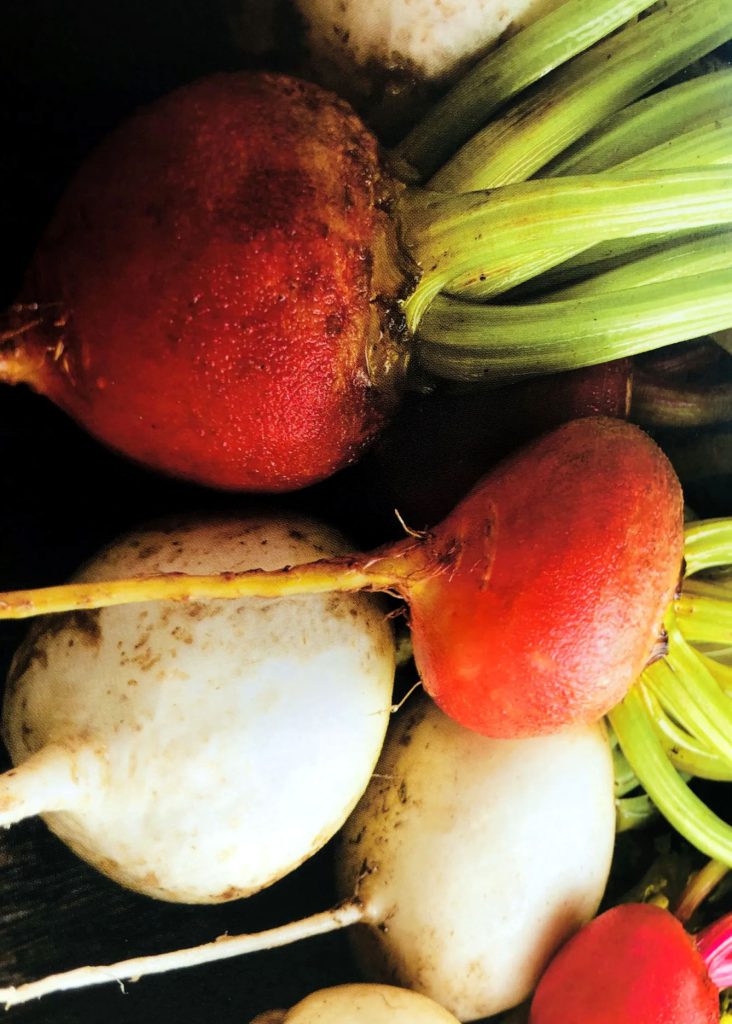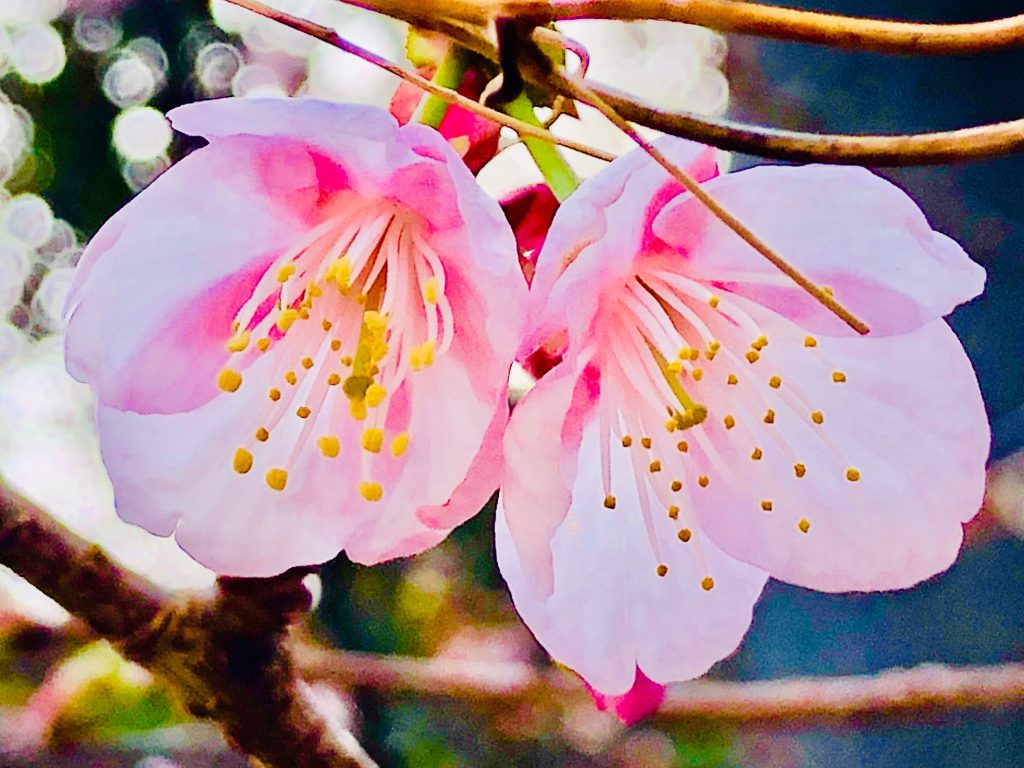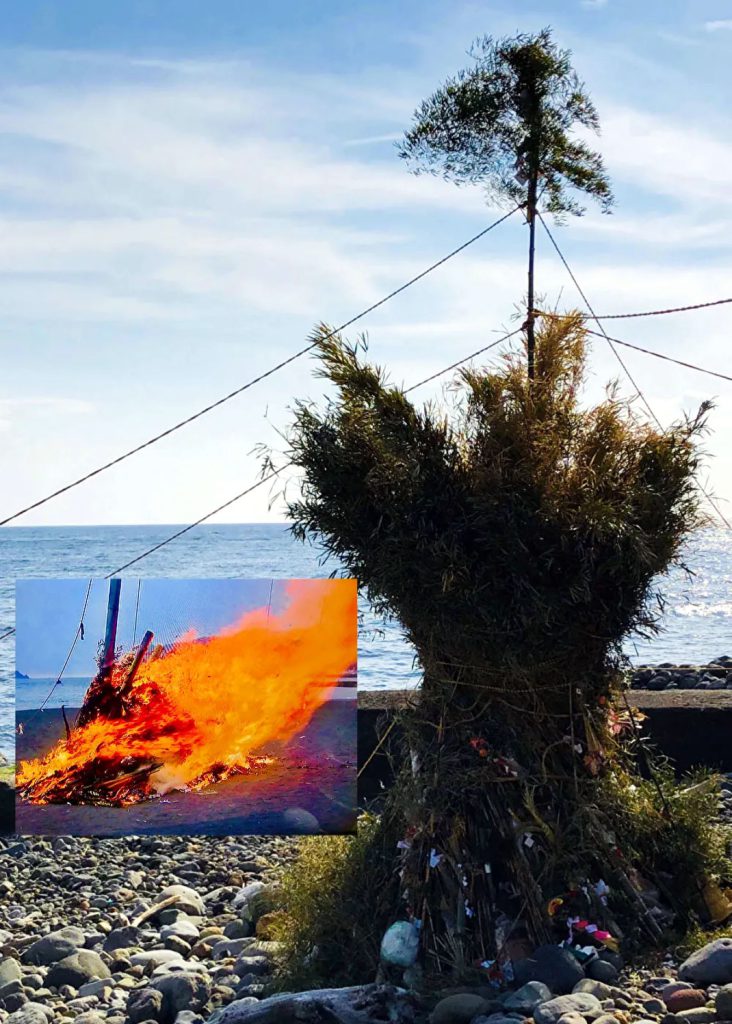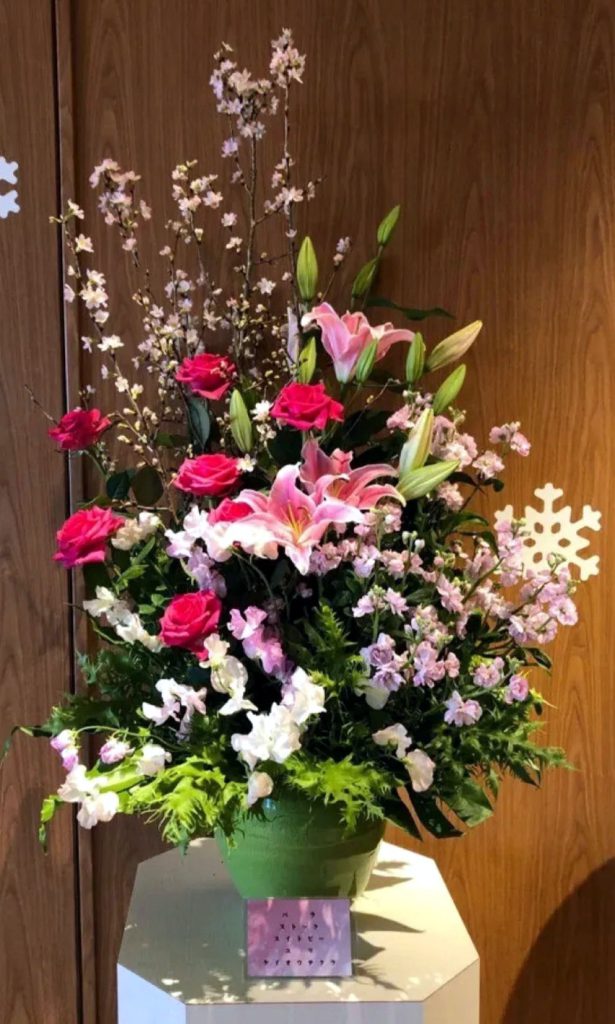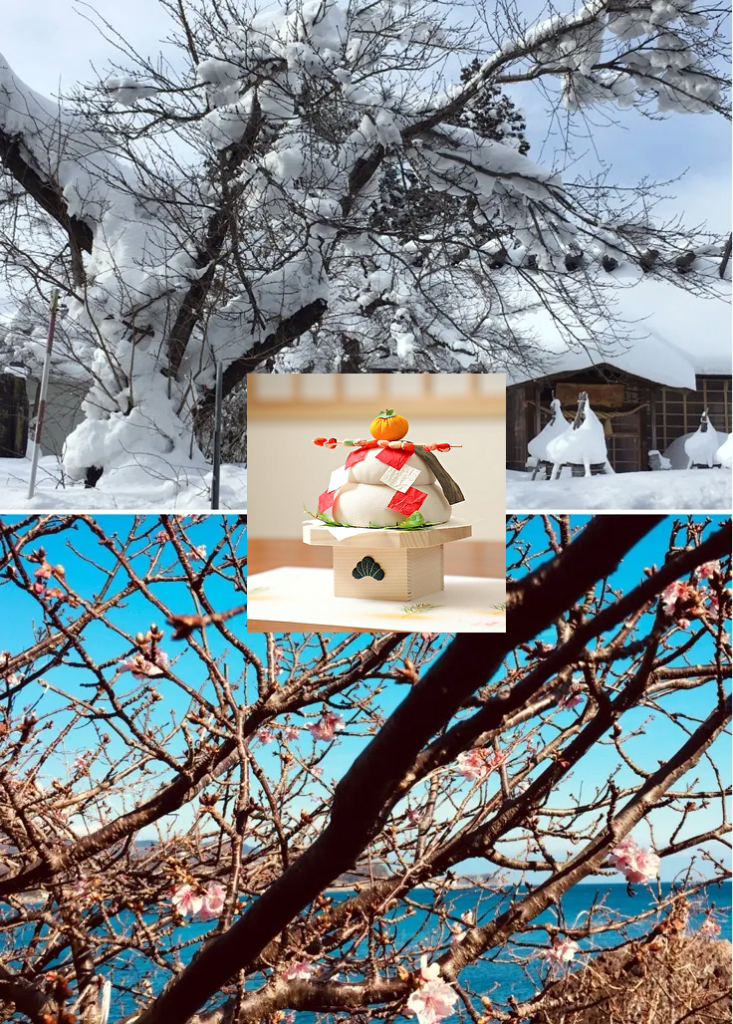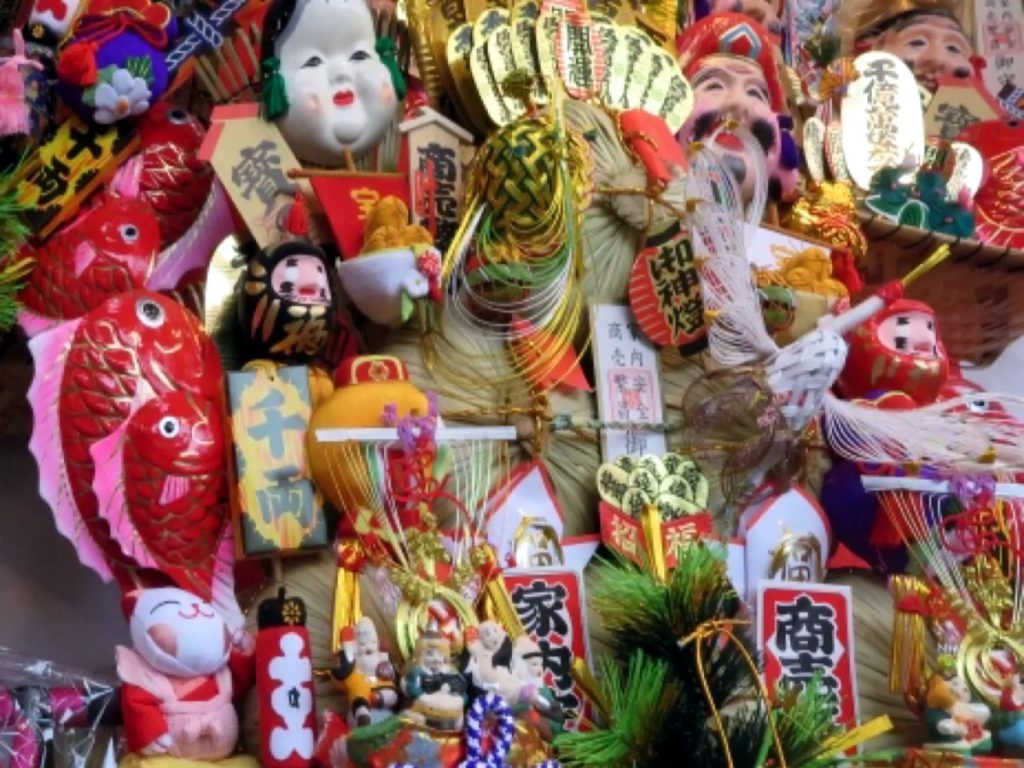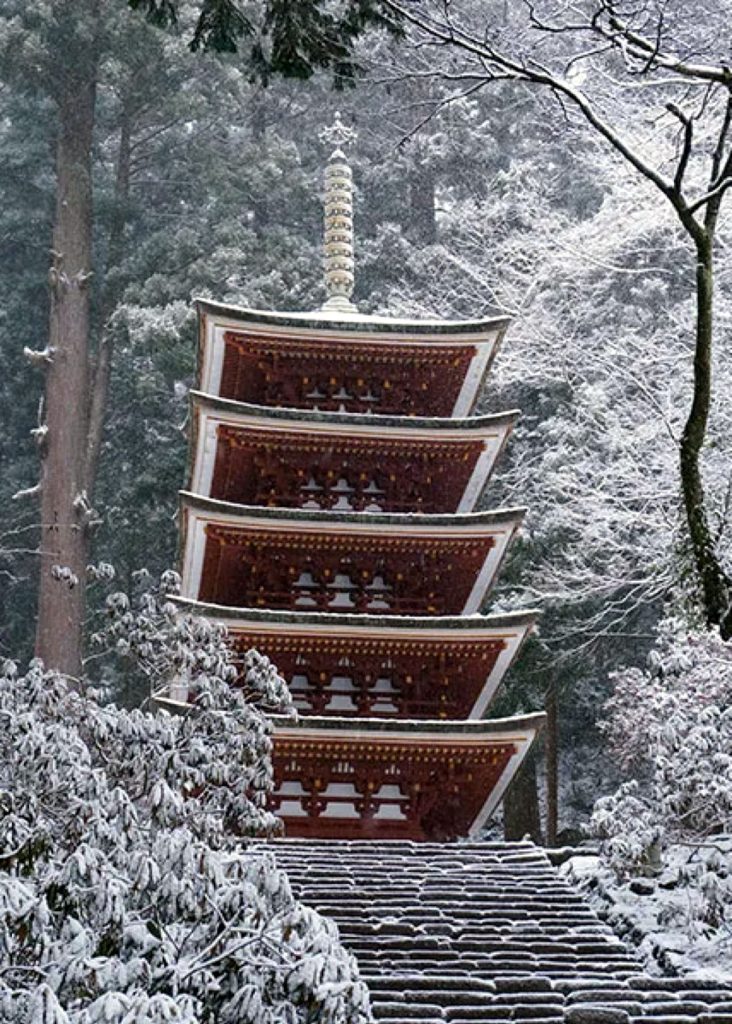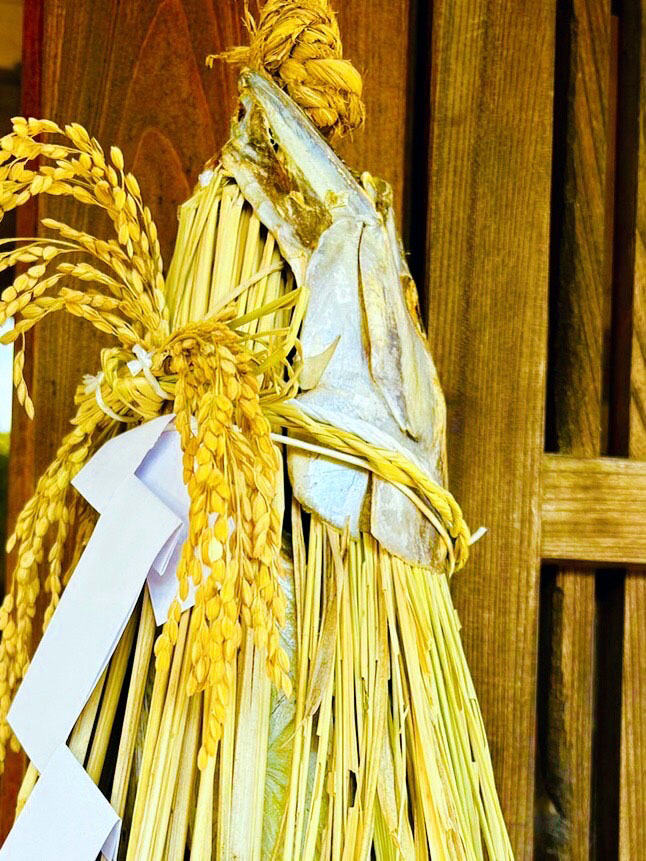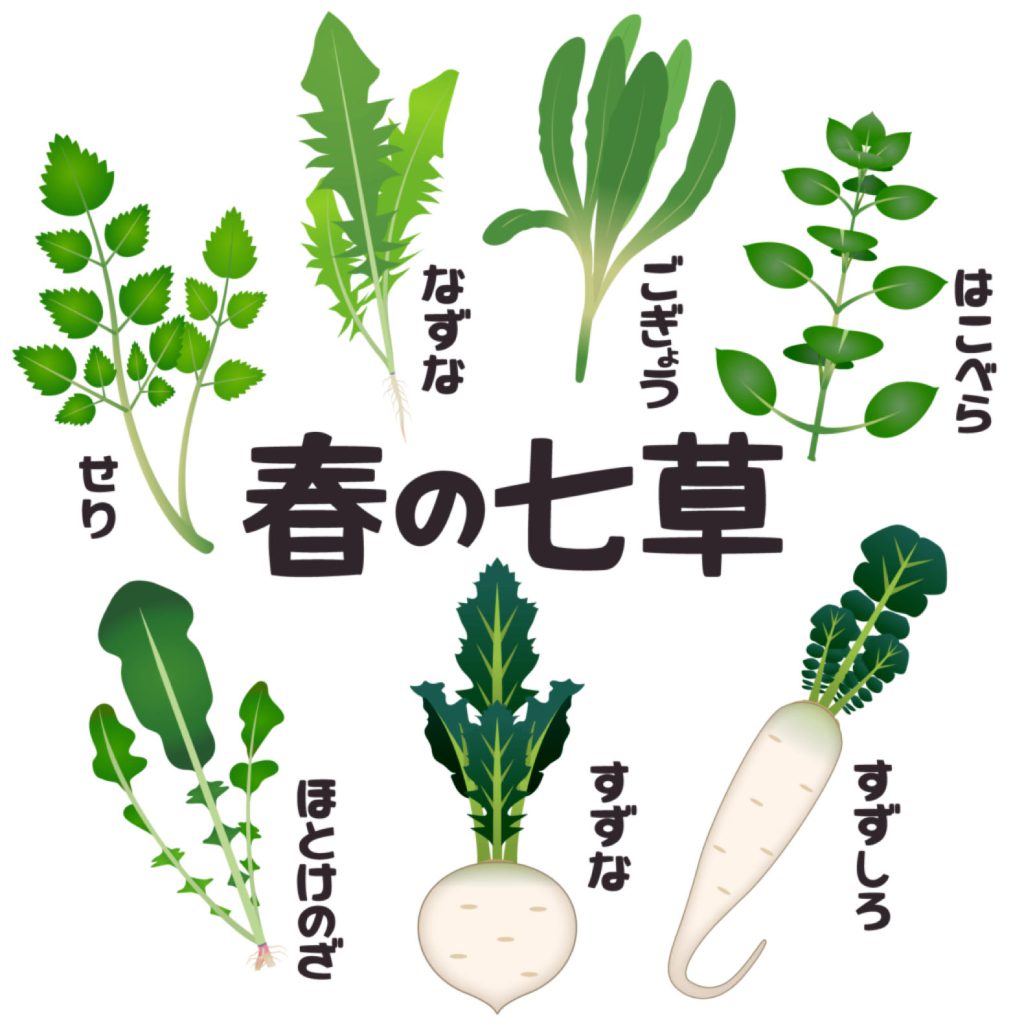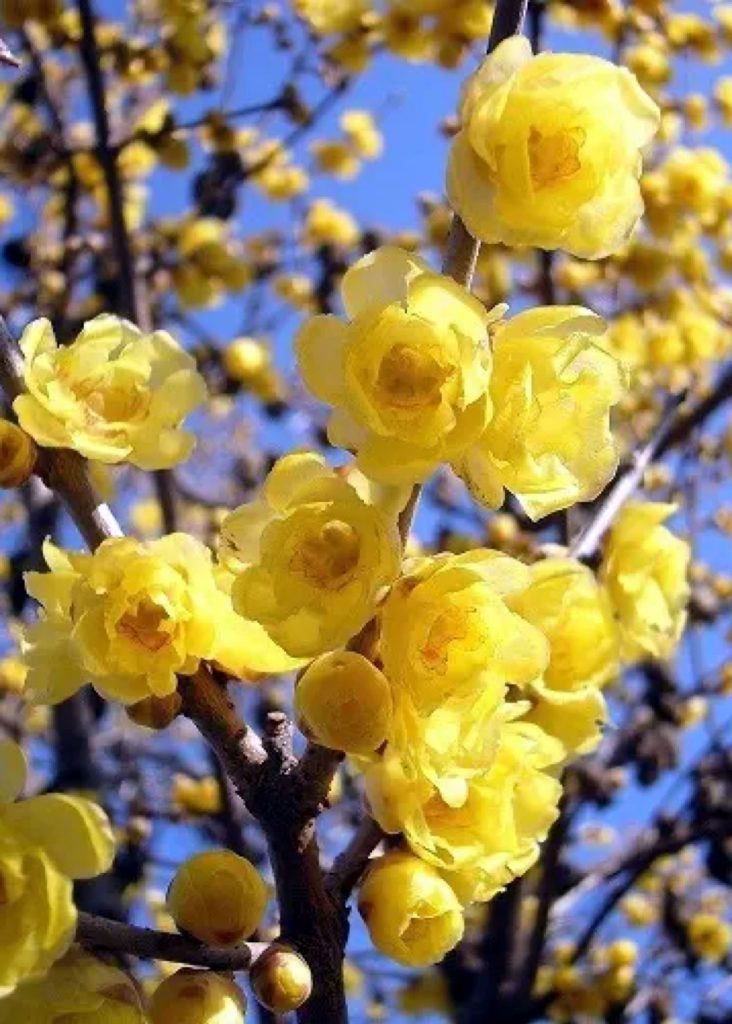
The scent of soap wafts faintly from one corner of the park. As you get closer, the Robai(Japanese allspice) blossoms are in full bloom. I didn’t even notice it until recently. Robai is said to have been named “Robai(wax plum)” because the texture of the flower looks like wax. It is said that the flower blooming season is around December of the lunar calendar, which is called Rogetsu, so it is said that the character of Rogetsu and plum are combined to be called “Robai”. The scent of Robai is sweet, and it is characterized by a faint soap-like clean scent, and is called “Winter sweet” in English. In China, the country of origin, Robai, along with plum, daffodils, and camellias, is revered as one of the four flowers in the snow, and was brought to Japan in the early Edo period.
公園の片隅から石鹸の香りが微かに漂ってきます。近づくと蝋梅の花が満開です。ついこの間まで目にもつきませんでした。蝋梅は花の質感が蝋の様に見えることから「蝋梅」という名前が付けられたと言われています。また、花の咲く時期が臘月と呼ばれる太陰暦12月の頃だから、臘月の臘の字と梅を併せて「臘梅」と呼ばれるようになったとも言われています。蝋梅の香りは甘く、微かに石鹸のような清潔感がある香りが特徴的で、英名では”Winter sweet”と呼ばれています。原産地の中国では、蝋梅は梅、水仙、椿とともに、「雪中の四花」として尊ばれていて、江戸時代初期に日本へ渡来しました。

